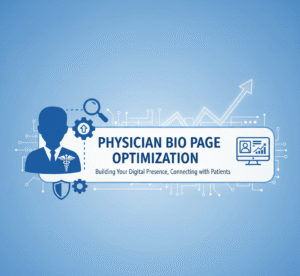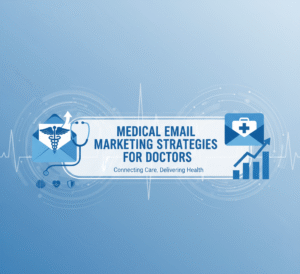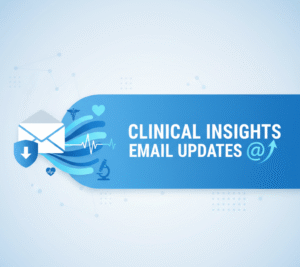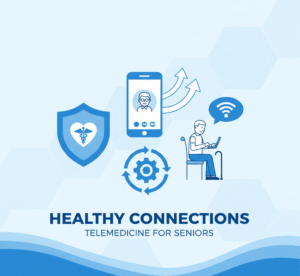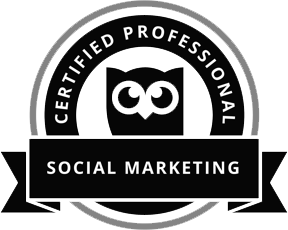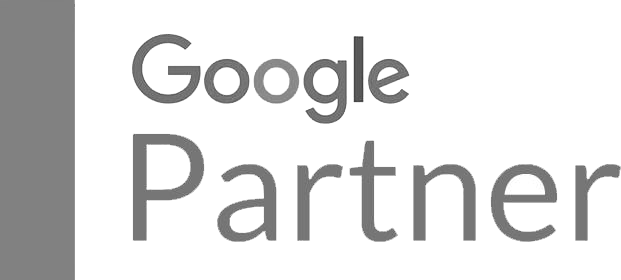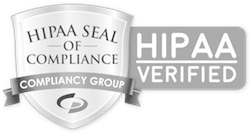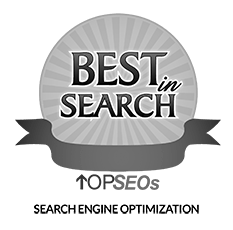“Discover how rehab facilities can consistently attract quality clients online. This guide covers essential strategies for lead generation for rehab centers, including SEO, targeted ads, and content marketing.”
In addiction treatment, our primary mission is to help individuals find the care they need. However, even the most effective rehab facilities face a common challenge: consistently attracting new clients. This isn’t just about filling beds; it’s about reaching people at their most vulnerable, guiding them toward recovery. For many centers, the answer lies in robust online lead generation for rehab centers.
The digital landscape offers unprecedented opportunities. Unlike traditional methods, online marketing allows for precise targeting, measurable results, and a broader reach. When executed well, digital strategies can ensure a steady stream of inquiries, helping facilities maintain their operations and continue their life-changing work. This article will provide clear, practical insights on how rehab facilities can consistently generate quality leads online through effective digital marketing strategies. We’ll highlight key tactics such as search engine optimization (SEO), targeted advertising, and content marketing, all tailored specifically for the rehab industry.
We also emphasize how InvigoMedia, a specialized medical digital marketing company, supports rehab centers. We deliver customized marketing solutions that boost online presence and attract the right clients. Our approach focuses on providing actionable steps to help your facility thrive in the competitive online environment.
Understanding the Landscape: Why Digital Marketing is Crucial for Rehab Centers
For far too long, lead generation for rehab centers relied on word-of-mouth or limited local advertising. Today, the internet is the first place most people turn for information, especially about sensitive health matters. Potential clients, or their concerned loved ones, are actively searching for solutions. If your facility isn’t visible online, you’re missing out on many individuals desperately seeking help.
Digital marketing is more than just having a website. It’s about creating a comprehensive online presence that educates, engages, and converts. Think of it as building a digital lifeline for those in need. It builds trust and positions your facility as a credible, compassionate resource when done correctly. Furthermore, digital marketing offers superior tracking capabilities. You can see exactly where your leads are coming from, what strategies are working, and where adjustments are needed. This level of insight is invaluable for optimizing your marketing spend and maximizing your impact.
The demand for addiction treatment services remains high. However, simply existing isn’t enough. A strong online lead generation strategy or rehab centers ensures your facility remains competitive and continues to serve its community effectively. It helps you fill your rooms and meet admission goals by consistently attracting and converting potential clients online.
Building Your Foundation: Website Optimization and User Experience
Before diving into specific lead generation tactics, it is crucial to ensure your digital home—your website—is optimized. Your website is often the first point of contact for potential clients. It must be more than just an online brochure. It needs to be a helpful, easy-to-navigate resource that guides visitors toward seeking help.
First, consider the overall user experience (UX). Is your website easy to navigate on both desktop and mobile devices? Many individuals searching for rehab services are doing so from their smartphones. A responsive design is non-negotiable. Pages should load quickly, as slow websites can deter visitors, especially those in a crisis. Clear calls to action (CTAs) should be on every page, guiding users to take the next step, whether calling for a consultation, filling out a contact form, or downloading an informational guide.
Content on your website needs to be informative and reassuring. Clearly explain your treatment programs, your philosophy, and what a typical day looks like. Provide details about your staff, accreditations, and success stories (while respecting patient privacy). Address common questions and concerns upfront. The goal is to build trust and demonstrate your expertise.
Furthermore, ensure your website is secure. Using HTTPS is vital for protecting user data and impacts your search engine rankings. A secure website reassures visitors that their information is safe when they interact with your forms or share personal details.
Finally, think about accessibility. Are your fonts readable? Is your color contrast sufficient? Can individuals with visual impairments navigate your site effectively? Making your website accessible ensures that everyone who needs help can find the information they require without unnecessary barriers. A well-optimized website forms the bedrock of all your online marketing efforts. Without it, even the best lead generation strategies for rehab centers will fall short.
Reaching Those in Need: Search Engine Optimization (SEO) for Rehab Centers
Search Engine Optimization, or SEO, is perhaps the most fundamental digital marketing strategy for rehab facilities. It’s about making your website visible when people search for addiction treatment services on Google and other search engines. The vast majority of online experiences begin with a search query. Therefore, ranking high in search results is paramount for consistent lead generation for rehab centers.
SEO for rehab centers involves several key components. First, keyword research is essential. You need to understand what terms potential clients use when searching for help. This goes beyond just “rehab near me.” Think about specific types of addiction (e.g., “alcohol treatment programs,” “opioid detox centers”), geographic locations (e.g., “rehab centers in [City, State]”), or even problem-specific phrases (e.g., “how to help a loved one with addiction”). Using tools to identify high-volume, relevant keywords will inform your content strategy.
Next, on-page SEO involves optimizing the content and structure of your website pages. This means strategically placing your keywords in titles, headings, meta descriptions, and throughout your body text. However, avoid “keyword stuffing”; the content must read naturally and be helpful to human visitors. Each page should focus on a specific topic or keyword phrase. For example, you might have a dedicated page for “inpatient drug rehab” and another for “outpatient addiction treatment,” each optimized with relevant keywords.
Technical SEO ensures search engines can easily crawl and index your website. This includes having a sitemap, using structured data (schema markup) to provide context about your facility (e.g., address, phone number, services offered), and ensuring your site speed is excellent. Broken links or duplicate content can harm your rankings, so regular technical audits are essential.
Local SEO is critically important for rehab centers. Most people seek treatment within a reasonable geographic proximity. Optimizing for local searches involves creating and verifying your Google My Business profile, ensuring your Name, Address, and Phone number (NAP) are consistent across all online directories, and encouraging client reviews. A strong local SEO presence means your facility appears prominently in Google Maps and local search results when someone searches for “rehab near me.”
Finally, off-page SEO focuses on building authority for your website through backlinks. When other reputable websites link to your site, it signals to search engines that your content is valuable and trustworthy. Strategies for acquiring backlinks include creating high-quality, shareable content, contacting relevant organizations (e.g., mental health blogs, local news outlets), and participating in community initiatives. Building a strong backlink profile takes time but significantly boosts your domain authority.
SEO is not a one-time task. It requires ongoing monitoring, analysis, and adaptation to algorithm changes. Consistently optimizing your website for search engines ensures that when individuals are searching for help, your facility is among the first they discover. This continuous effort is a cornerstone of effective lead generation for rehab centers.
Immediate Impact: Targeted Advertising (PPC) for Rehab Centers
While SEO builds long-term organic visibility, targeted advertising, often called Pay-Per-Click (PPC), offers immediate visibility and can quickly generate leads. PPC campaigns allow rehab facilities to appear at the top of search engine results pages and on various websites, reaching potential clients precisely when searching for treatment options. This direct approach is a powerful tool for addiction treatment lead generation.
The most common form of PPC is Google Ads. Here, you bid on keywords relevant to your services. When someone searches for those keywords, your ad may appear at the top of the search results, distinguished by a small “Ad” label. The beauty of PPC is that you only pay when someone clicks on your ad, making it a cost-effective way to drive targeted traffic to your website.
Effective PPC campaigns for rehab centers require careful planning. First, keyword selection is crucial. You’ll want to target particular, “high-intent” keywords, meaning users searching these terms will likely seek immediate help. Examples include “addiction treatment near [city],” “drug rehab admissions,” or “detox programs available.” Including negative keywords is also essential to prevent your ads from showing for irrelevant searches (e.g., if you don’t treat opioid addiction, you’d add “opioid” as a negative keyword if you’re broadly targeting “addiction treatment”).
Ad copy must be compelling and empathetic. Your ad must stand out and convey a clear message of hope and support. Highlight your unique selling propositions, such as specialized programs, accreditations, or a compassionate staff. Include a strong call to action, encouraging users to “Call Now,” “Learn More,” or “Get Help Today.” Ad extensions, such as phone numbers, location information, and site links, can make your ads more prominent and provide additional ways for users to connect.
Landing pages for your PPC ads are critically important. When someone clicks your ad, they should land on a page that directly addresses their specific need and has a clear conversion path. This landing page should be highly relevant to the ad they clicked, provide concise information, and have a prominent contact form or phone number. A poorly designed landing page can waste ad spend, as visitors will quickly leave if they don’t find what they want.
Beyond search ads, display advertising allows you to show visual ads on websites across the internet. This can be used for remarketing (showing ads to people who have previously visited your website) or targeting specific audiences based on their interests or demographics. Social media advertising on platforms like Facebook and Instagram also offers powerful targeting capabilities, allowing you to reach individuals based on interests, behaviors, or even custom audiences (e.g., people who have interacted with your content).
PPC requires continuous monitoring and optimization. You’ll need to track metrics like click-through rates (CTR), conversion rates, and cost per acquisition (CPA). Adjusting bids, refining ad copy, and optimizing landing pages are ongoing tasks that ensure your campaigns remain effective and deliver a strong return on investment. Targeted advertising immediately boosts your lead generation efforts for rehab centers, complementing the long-term benefits of SEO.
Connecting Through Content: Content Marketing for Rehab Facilities
Content marketing creates and distributes valuable, relevant, consistent content to attract and retain a clearly defined audience. For rehab facilities, this means producing content that educates, supports, and guides individuals and families through the complex journey of addiction and recovery. This strategy is central to online marketing for addiction treatment.
Blogging is a cornerstone of content marketing. A consistent blog demonstrates your expertise and compassion. Topics can range from explaining different treatment modalities (e.g., “Understanding Cognitive Behavioral Therapy in Addiction Recovery”) to offering advice for families (“How to Support a Loved One Entering Rehab”) or debunking common myths about addiction. Each blog post is an opportunity to answer common questions, provide valuable information, and incorporate relevant keywords, further boosting your SEO. Companies that actively blog experience a significant increase in website links, showcasing their value.
Video content has become incredibly powerful. Research shows that many prefer video over text when learning about a product or service. Short, informative videos explaining your programs, testimonials (with consent and privacy considerations), or even virtual tours of your facility can be highly engaging. Videos can be shared on your website, social media channels, and YouTube, reaching a wider audience and building a more personal connection.
Gated content, such as downloadable guides, e-books, or whitepapers, allows you to gather lead information. For example, you could offer a free “Guide to Choosing the Right Rehab Facility” in exchange for an email address. This would position your facility as an authority and provide valuable information to potential clients while building your email list for future nurturing.
Personalization in content delivery significantly improves efficacy. When you understand your audience’s needs, you can tailor content to them. This might involve segmenting your email list based on the type of addiction someone inquired about and sending them more specific, relevant information. Personalized experiences make people more likely to engage and eventually choose your services.
Interactive quizzes and pop-ups can also engage site visitors and collect contact information. A quiz titled “Is It Time for Professional Help?” can guide users through a series of questions, subtly assessing their situation, and then offer a recommendation to contact your facility. When used sparingly and strategically, pop-ups can capture attention and encourage sign-ups for newsletters or immediate contact.
Content marketing aims to establish your facility as a trusted resource. You build rapport and guide individuals through decision-making by consistently providing valuable information. This educational approach aligns perfectly with the sensitive nature of addiction treatment and helps foster a relationship before a client even picks up the phone.
Engaging and Nurturing: Email Marketing and Social Media
Once you’ve captured a lead, the journey is just beginning. Email marketing and social media are crucial for nurturing these leads, keeping your facility top-of-mind, and guiding them towards admission. These strategies are vital for rehab patient acquisition.
Email marketing is one of the most effective ways to engage prospects over time. After someone has provided their email address (perhaps through gated content or a newsletter sign-up), you can send them automated emails designed to educate and reassure. This could include:
- A welcome email introducing your facility and its mission.
- Emails provide more detailed information about specific programs.
- Links to helpful blog posts or videos.
- Information about insurance verification or admission processes.
- Personalized messages based on their initial inquiry.
The key is to provide value, not just sales pitches. Share stories of hope (with appropriate permissions), offer practical advice, and gently guide them toward making decisions. Keep your emails concise and informative, and include clear calls to action. A well-segmented email list lets you send highly relevant content, increasing engagement and conversion rates.
Social media marketing plays a different but equally important role. Platforms like Facebook, Instagram, and even LinkedIn can be powerful tools for reaching a wider audience and building a community. For rehab centers, social media is about more than just advertising; it’s about sharing a message of hope, destigmatizing addiction, and providing a platform for connection.
Your social media strategy should focus on:
- Informative content: Share snippets from your blog posts, statistics about addiction and recovery, and educational graphics.
- Empathetic content: Post messages of support, quotes that inspire recovery, and stories of triumph.
- Community engagement: Respond to comments, answer questions, and participate in relevant discussions.
- Live Q&A sessions: Host live streams with your clinical staff to answer common questions about treatment.
- Paid social ads: Utilize the detailed targeting options on platforms like Facebook to reach specific demographics or interests.
Remember, social media is a conversation, not a broadcast. Engage with your audience authentically. Avoid overly salesy language. The goal is to build trust and demonstrate that your facility is a compassionate, knowledgeable resource. Social media can also be a valuable tool for direct messaging and immediate engagement, especially for those seeking urgent help.
Both email and social media marketing contribute significantly to nurturing leads. They allow you to stay connected with potential clients, answer unspoken questions, and help them feel confident choosing your facility for their recovery journey.
The Power of Conversion: Turning Leads into Admissions
Generating leads is only half the battle. The ultimate goal is to convert those leads into admissions. This requires a focus on conversion optimization, ensuring that every touchpoint effectively guides potential clients towards seeking treatment.
Compelling Calls to Action (CTAs) are paramount. A CTA is a prompt that tells the user what action to take. Instead of generic “Click Here,” use specific, action-oriented phrases like “Call Our Admissions Team,” “Verify Your Insurance,” “Start Your Recovery Journey Today,” or “Get a Free Confidential Assessment.” CTAs should be prominent, clear, and easy to find on every relevant page of your website and in your marketing materials.
Streamlined Contact Forms: If you use contact forms, keep them concise. Ask for essential information only (name, email, phone, brief message about their needs). Long forms can be intimidating and lead to abandonment. Ensure the forms are secure and clearly state what will happen after submission (e.g., “A compassionate admissions specialist will contact you shortly”).
Fast Response Times: Rapid response is critical when someone fills out a form or calls your facility. People seeking addiction treatment are often in crisis, and delays can lead to lost opportunities. Have a dedicated admissions team ready to respond to inquiries promptly, whether by phone, email, or live chat. Automating initial responses (e.g., an immediate email confirmation) can also help manage expectations.
Live Chat and Chatbots: Implementing live chat on your website provides an immediate way for visitors to ask questions and get real-time answers. This can be especially helpful for those who may be hesitant to call. Chatbots can also be valuable assets for enhancing lead generation for rehab centers’ efforts. They can answer frequently asked questions, guide users to relevant information, and even qualify leads by asking initial questions before connecting them with a human specialist. Many people will use chatbots to gather more information, making them a practical first point of contact.
Phone Call Tracking: For rehab centers, phone calls are often the most crucial conversion point. Implement call tracking software to monitor which marketing channels are generating calls, track call duration, and even record calls (with appropriate disclosures and consent) for quality assurance and training. This data provides invaluable insights into your marketing effectiveness and the performance of your admissions team.
Testimonials and Success Stories: While respecting privacy, sharing authentic testimonials or general success stories can build immense trust and reassure potential clients. Hearing from others who have successfully navigated recovery through your facility can be a powerful motivator.
Conversion optimization is an ongoing process of testing and refinement. Minor changes to your website, CTAs, or response protocols can significantly improve your admission rates. It’s about making the path to recovery as transparent and supportive as possible from the very first interaction.
InvigoMedia: Your Partner in Rehab Marketing Solutions
Navigating the complexities of digital marketing while focusing on patient care can be overwhelming for rehab facilities. This is where a specialized medical digital marketing company like InvigoMedia becomes an invaluable partner. We understand the healthcare industry’s unique sensitivities and regulatory requirements, particularly in addiction treatment. Our expertise in medical marketing for rehab ensures your facility generates leads and attracts the right clients.
We don’t offer one-size-fits-all solutions. We recognize that each rehab center has unique strengths, programs, and target audiences. We deliver customized marketing solutions designed to meet your facility’s goals. We work closely with you to understand your mission, ideal client profile, and competitive landscape.
Our team is proficient in all the strategies discussed in this article, from rehab center SEO strategies to online marketing for addiction treatment. We meticulously research keywords to ensure your facility ranks for the most relevant and high-intent search terms. We design and optimize landing pages that convert visitors into inquiries. Our content marketing specialists create compelling, empathetic content that educates and engages your target audience, establishing your facility as a trusted authority.
Furthermore, we manage targeted advertising campaigns that deliver immediate, qualified leads. Our expertise in addiction treatment lead generation means we know how to craft ad copy and select keywords that resonate with individuals seeking help, avoiding wasted ad spend on irrelevant clicks. We implement robust tracking and analytics to provide transparent reporting, showing exactly how your marketing investment translates into admissions.
At InvigoMedia, we pride ourselves on our deep understanding of the rehab industry. We are not just marketers; we are partners invested in your success. Our solutions are designed to boost your online presence, enhance your reputation, and most importantly, connect you with more individuals who desperately need your services. Choosing us, InvigoMedia, means choosing a dedicated team that understands the nuances of healthcare digital marketing and is committed to helping your facility thrive and continue its vital work.
Future-Proofing Your Lead Generation Efforts
The digital marketing landscape is constantly evolving. What works today might need adjustments tomorrow. For rehab facilities, staying ahead means continually adapting your lead generation for rehab centers’ strategies. This includes monitoring industry trends, embracing new technologies, and always putting the prospective client first.
Consider integrating advanced analytics tools to gain deeper insights into user behavior on your website. Understanding how visitors interact with your content, where they spend most of their time, and at what point they might abandon a form can inform significant improvements. Heatmaps and user session recordings can provide visual data that complements traditional analytics.
Exploring emerging platforms is also wise. While Facebook and Instagram are well-established, new social media channels or community forums might emerge where potential clients seek information or support. Being an early adopter on relevant platforms can give your facility a competitive edge.
Furthermore, actively solicit feedback from new admissions about how they found your facility and what influenced their decision. This qualitative data can provide invaluable insights that quantitative analytics alone cannot capture. It helps refine your messaging and ensure your marketing efforts align with your target audience’s needs and concerns.
Finally, remember that the human element remains paramount. While technology drives rehab marketing solutions, the ultimate goal is to connect individuals with compassionate care. Ensure your digital messaging consistently reflects the empathy, professionalism, and hope that your facility embodies. A strong online presence is a tool; genuine care is the foundation.
Conclusion
Generating consistent leads online is no longer an option but a necessity for rehab facilities committed to helping individuals find recovery. Facilities can significantly boost their online presence by strategically leveraging digital marketing tactics such as robust SEO, targeted advertising, and compassionate content marketing. These strategies increase visibility, build trust, and guide potential clients towards seeking treatment.
Remember, the goal is to connect with people at their point of need, offering a clear path to hope and healing. With a well-executed digital strategy, your rehab center can ensure a steady stream of qualified inquiries, allowing you to focus on what you do best: providing life-changing care.
If your rehab facility is ready to transform its online presence and consistently attract the right clients, consider partnering with specialists. With InvigoMedia’s dedicated expertise in medical digital marketing, we are uniquely positioned to craft customized solutions that deliver real results. We help you navigate the digital landscape, ensuring your message reaches those who need it most, ultimately helping more individuals embark on their journey to recovery.
Frequently Asked Questions (FAQs)
Q1: How long does it take to see results from online lead generation for rehab centers?
A1: The timeline for seeing results can vary. Targeted advertising (PPC) often provides immediate leads, sometimes within days or weeks of launching campaigns. SEO, on the other hand, is a long-term strategy. It can take several months (3-6 months or even longer) to see significant improvements in organic search rankings and consistent lead flow from SEO efforts. Content marketing also builds momentum over time. A comprehensive strategy that combines immediate and long-term tactics typically yields the best results.
Q2: Is it better to focus on SEO or PPC for rehab lead generation?
A2: A blended approach combining SEO and PPC is generally recommended for optimal lead generation for rehab centers. PPC offers quick visibility and immediate leads, which can be crucial for filling beds promptly. SEO builds sustainable, cost-effective organic traffic over the long term, reducing reliance on paid advertising. They complement each other effectively, with SEO building brand authority and PPC capturing immediate high-intent searches.
Q3: How much should a rehab center budget for digital marketing?
A3: Digital marketing budgets for rehab centers can vary widely depending on the facility’s size, goals, competitive landscape, and desired pace of growth. Factors like the cost of keywords for PPC, the extent of content creation needed, and the level of SEO competition in your geographic area will influence the budget. Start with a realistic budget and scale up as you see a positive return on investment. Investing in a professional medical digital marketing company like us (InvigoMedia) can help optimize your budget for maximum impact.
Q4: How can I track the effectiveness of my online lead generation efforts?
A4: Tracking the effectiveness of your online marketing for addiction treatment involves several key metrics and tools. You should use Google Analytics to monitor website traffic, user behavior, and conversion rates (e.g., form submissions, phone calls). Google Ads provides detailed data on PPC campaign clicks, impressions, costs, and conversions. ICalltracking software is essential for monitoring phone inquiries, which are often the primary conversion point for rehab facilities. Regularly reviewing these metrics lets you identify what’s working and make data-driven decisions to optimize your strategies.
Q5: What is the most critical factor in converting online leads into admissions?
A5: While many factors contribute to converting online leads, the most important is often a rapid and empathetic response from your admissions team. People reaching out for addiction treatment are often in a vulnerable state and seeking immediate help. A quick, compassionate, and professional follow-up can make all the difference. Beyond that, having a clear, supportive admissions process, transparent information about programs and costs, and a strong sense of trust built through your online presence are critical.
Q6: Can social media generate leads for rehab centers?
A6: Though often indirectly, social media can generate leads for rehab centers. While direct conversions from social media might be less common than from search engines, social platforms are powerful for building brand awareness, fostering a supportive community, and educating a broader audience. Paid social media advertising offers sophisticated targeting capabilities to reach specific demographics who may be searching for help or whose friends/family are. You can position your facility as a trusted resource by sharing informative, empathetic content, leading to inquiries over time.
Q7: How does InvigoMedia specifically help with lead generation for rehab centers?
A7: We specialize in medical digital marketing, with a deep understanding of the rehab industry. We help rehab centers generate consistent leads online by developing and implementing customized strategies across all key areas:
- SEO: Optimizing your website for relevant keywords and local searches to improve organic visibility.
- PPC: Managing targeted advertising campaigns on Google and social media for immediate, qualified leads.
- Content Marketing: Creating educational and empathetic content (blogs, videos, guides) that positions your facility as an authority.
- Website Optimization: Ensuring your site offers an excellent user experience and clear conversion paths.
- Conversion Optimization: Implementing strategies to turn inquiries into admissions, including strong CTAs and efficient follow-up systems. We aim to provide comprehensive, data-driven solutions that attract the right clients and support your facility’s mission.
Q8: Should rehab centers consider online reviews as a lead generation strategy?
A8: Online reviews are critical to rehab centers’ effective lead generation strategy. Before deciding, prospective clients and their families often review reviews on platforms like Google My Business, Healthgrades, or Yelp. Positive reviews build trust and credibility and serve as social proof of your facility’s quality of care. Actively encouraging satisfied clients (while respecting privacy and ethical guidelines) to leave reviews and thoughtfully responding to all reviews (positive and negative) can significantly enhance your online reputation and attract more leads.
